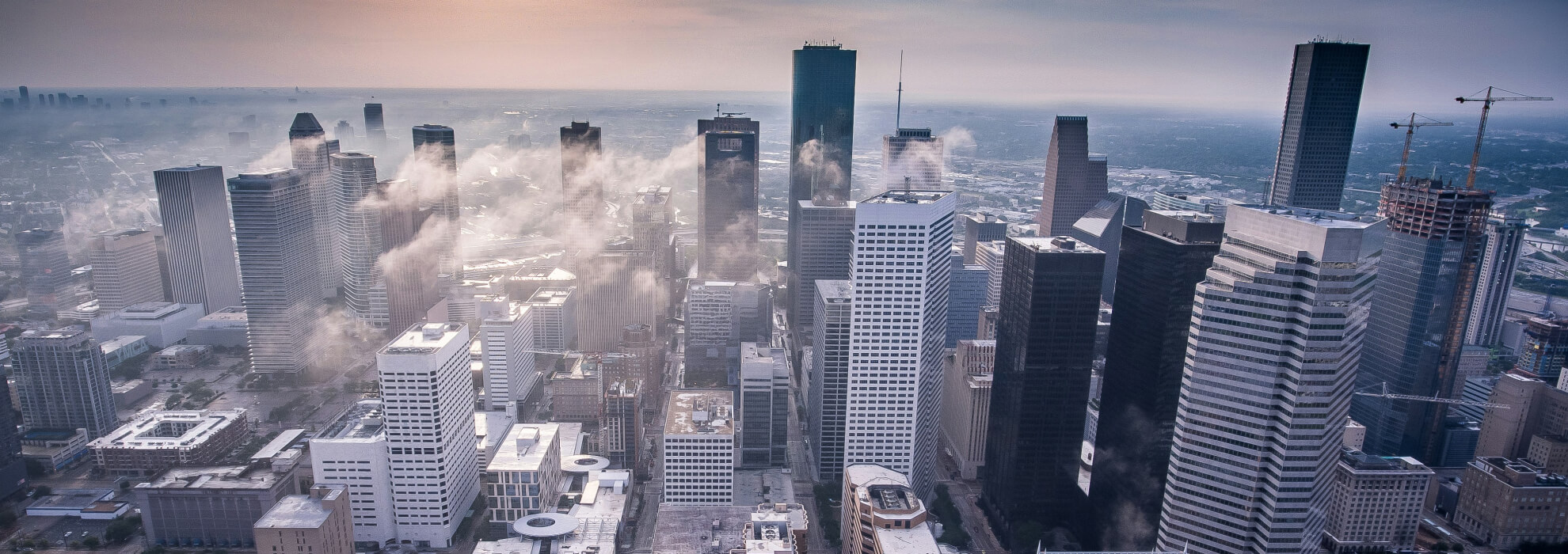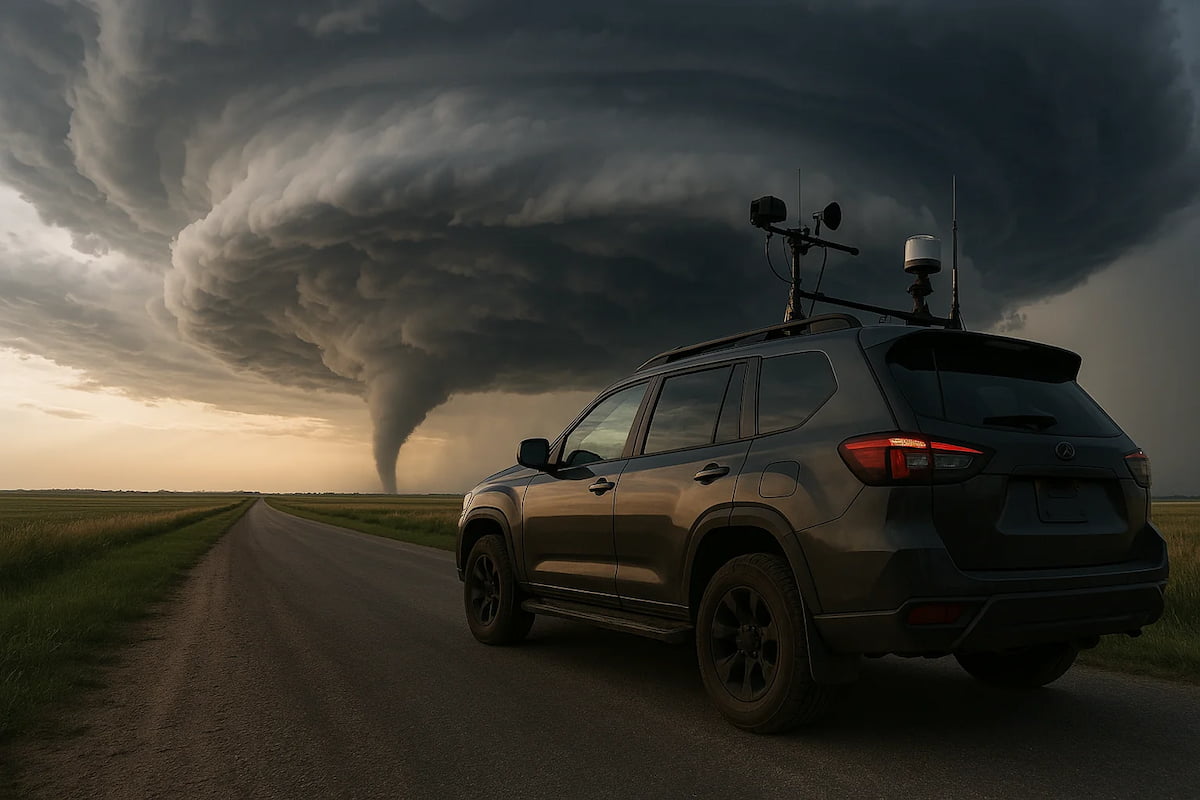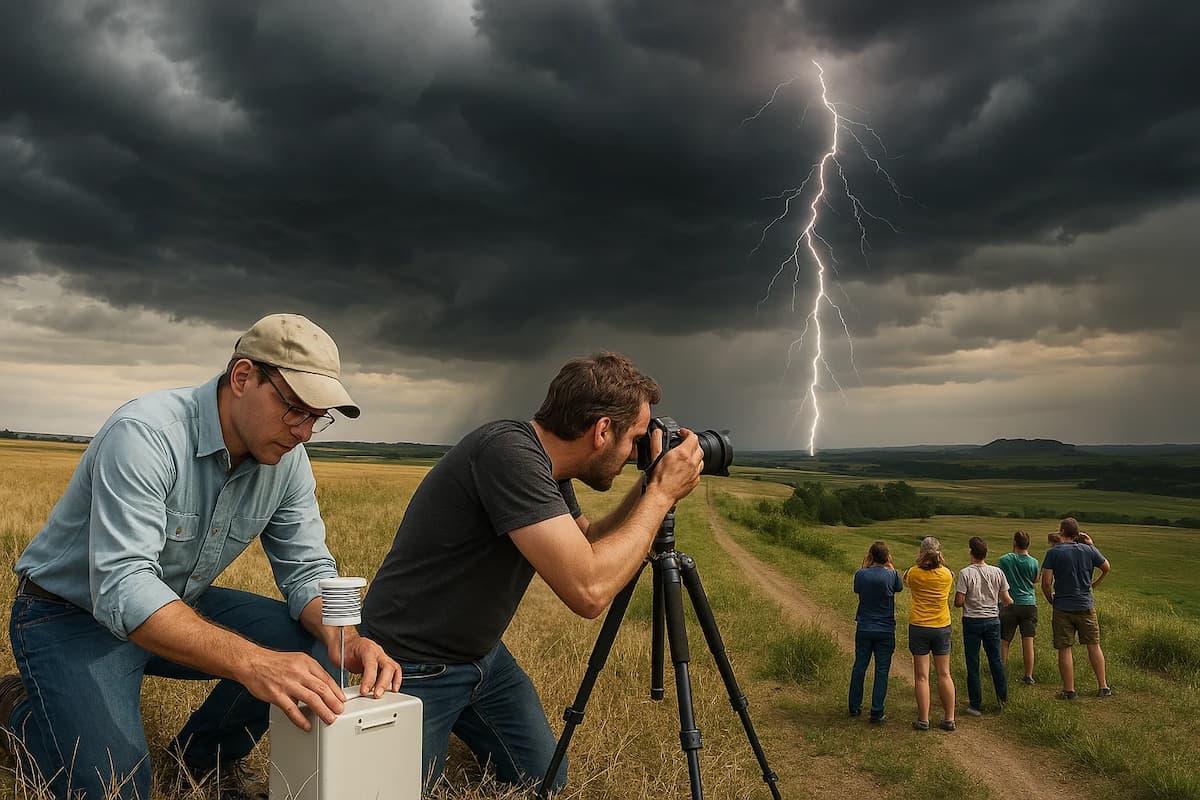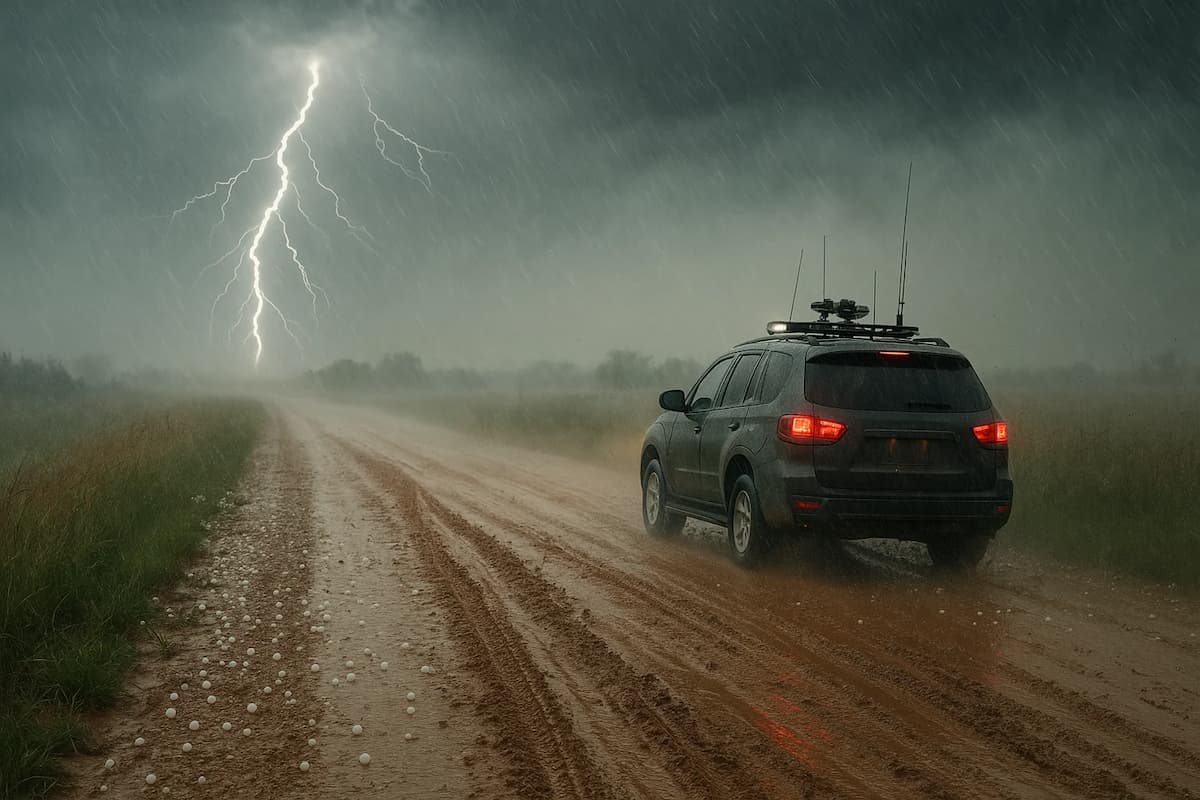
Watch short for this article (5 slides)
Into the Vortex: The High-Stakes World of Storm Chasing
Imagine gripping the wheel, eyes fixed on a turbulent horizon where the sky boils with potential energy. A distant wall cloud lowers, rotates, and suddenly, a swirling funnel descends - a tornado touching down. For most, this signals immediate retreat to safety. But for a unique community, it's the opposite: a signal to advance. These are the storm chasers - a diverse group of scientists, photographers, videographers, meteorologists, tour operators, and adrenaline-seeking enthusiasts drawn to the raw power and terrifying beauty of severe weather phenomena like tornadoes, hurricanes, and supercell thunderstorms.
The Multifaceted Drive: Why Chase the Storm?
The motivations behind storm chasing are as varied as the individuals involved, ranging from pure scientific inquiry to the pursuit of visceral thrills.
1. Scientific Discovery and Data Collection
For meteorologists and atmospheric researchers, chasing storms is a crucial method for gathering vital data that cannot be obtained remotely. Ground-based measurements and close-up observations help scientists:
- Understand Storm Structure and Dynamics: Measuring wind speeds near the ground, pressure drops within or near vortices, temperature gradients, and precipitation types helps unravel the complex physics of tornadoes and severe thunderstorms (tornadogenesis, hail formation, rear-flank downdraft dynamics).
- Improve Numerical Weather Prediction (NWP) Models: Real-world data is essential for validating and refining the computer models used for forecasting. Data on inflow conditions, storm evolution, and environmental parameters helps improve model accuracy and warning lead times. Key research projects like VORTEX (Verification of the Origins of Rotation in Tornadoes Experiment) have heavily relied on chase teams. (Source: NOAA National Severe Storms Laboratory - VORTEX2)
- Develop Better Warning Systems: Understanding the visual cues and radar signatures associated with tornadic development allows forecasters at agencies like the National Weather Service (NWS) to issue more timely and accurate warnings to the public.
2. Media, Photography, and Videography
Capturing high-quality images and video footage of dramatic weather events drives many chasers. This includes professional photojournalists, documentary filmmakers, and dedicated hobbyists aiming to document nature's power. Their work often appears in news reports, educational materials, and television programs, bringing the reality of severe weather to a wider audience.
3. Adrenaline, Adventure, and Personal Fascination
For some, chasing is driven by the sheer awe and adrenaline rush of witnessing extreme weather firsthand. The intense sensory experience - the darkening sky, the roar of the wind, the sight of a rotating supercell or a forming tornado - provides a powerful, unforgettable encounter with nature's forces. This group ranges from experienced hobbyists with meteorological knowledge to casual thrill-seekers.
4. Storm Tours and Education
A niche industry has developed where experienced chasers lead tours for paying customers, offering them a relatively safer way to witness severe weather phenomena under expert guidance. These tours often combine adventure with education about meteorology and storm safety.
Prime Hunting Grounds: Where Storms Rage
While severe weather can occur globally, certain regions are hotspots for storm chasing activity:
Tornado Alley, USA: The Classic Chase Domain
This loosely defined region in the Great Plains of the central United States (including parts of Texas, Oklahoma, Kansas, Nebraska, Iowa, and South Dakota) is world-renowned for its frequency of supercell thunderstorms and tornadoes, particularly during the spring months (April-June).
- Meteorological Setup: Tornado Alley's unique geography facilitates the clash of distinct air masses: warm, moist air flows north from the Gulf of Mexico at low levels; cool, dry air descends from the Rocky Mountains at mid-levels; and cold, dry air pushes south from Canada at upper levels. This creates atmospheric instability. The presence of a "dryline" (a boundary between moist and dry air) and strong wind shear (changes in wind speed and direction with height), often enhanced by the jet stream, provides the necessary ingredients for rotating supercell thunderstorms, the type most likely to produce strong tornadoes.
Dixie Alley, USA: A Different Challenge
Located in the southeastern US, this region also experiences significant tornado activity, often earlier in the spring or later in the fall. Chasing here presents different challenges: hilly terrain, more trees obscuring visibility, higher humidity leading to rain-wrapped tornadoes, and a greater frequency of nighttime tornadoes, making visual confirmation and safe navigation more difficult.
Hurricane Landfall Zones
Chasing landfalling hurricanes along coastal areas (e.g., Gulf Coast, Atlantic Coast) involves intercepting the storm's core (including the eyewall and potentially the eye) to measure extreme winds, storm surge, and pressure drops. This is exceptionally dangerous due to widespread destructive winds, torrential rainfall, flooding, and flying debris.
The Chaser's Arsenal: Tools of the Trade
Modern storm chasing blends meteorological knowledge with sophisticated technology.
Forecasting and Tracking Tools
Successful chasing relies heavily on accurate forecasting days, hours, and minutes ahead:
- NWP Models: Chasers meticulously analyze output from various numerical weather prediction models (e.g., HRRR, RAP, NAM, GFS) to identify potential severe weather setups days in advance.
- Surface and Upper Air Data: Analyzing weather maps showing temperature, dew point, pressure, wind fields, and atmospheric soundings (like Skew-T diagrams) helps pinpoint target areas with favorable conditions.
- Satellite Imagery: Monitoring cloud development, moisture transport, and jet stream patterns.
- Weather Radar: Real-time radar data (often accessed via mobile apps using cellular data) is critical for tracking storm location, intensity, movement, and identifying key features like hook echoes, velocity couplets (indicating rotation), and debris ball signatures (suggesting a tornado causing damage). Doppler radar provides wind velocity information within the storm.
- Mobile Data & Apps: Specialized apps (e.g., RadarScope, PYKL3) provide access to high-resolution radar data, model updates, GPS tracking, and chaser communication platforms.
Vehicles and Modifications
The chase vehicle is a mobile command center and a crucial safety element:
- Reliable Base Vehicle: Typically SUVs or trucks offering decent ground clearance and robustness. Four-wheel drive can be advantageous on unpaved roads.
- Reinforcements (Less Common, More Extreme): Some vehicles, especially for media or research, might feature minor reinforcements like hail guards or window protection. Highly specialized vehicles like the TIV (Tornado Intercept Vehicle) were heavily armored with steel plating and Lexan windows, designed to withstand direct tornado impacts, but these are exceptions, not the norm.
- Communication Systems: HAM radio, CB radio, satellite phones, and multiple cellular data connections for redundancy and communication with other chasers or base support.
- Instrumentation Mounts: Secure mounting points for cameras, weather sensors (anemometers, thermometers, barometers), and laptops/tablets.
- Power and Data Logging: Inverters for powering equipment, GPS receivers, and systems for logging meteorological data.

Scientific Instrumentation (for Research Teams)
Research teams deploy advanced instruments:
- Mobile Mesonets: Vehicles equipped with roof-mounted weather stations continuously logging data.
- Deployable Probes: Instruments like Tim Samaras's "turtle probes" designed to be placed in a tornado's path to measure ground-level pressure and wind.
- Mobile Radars (DOWs): Doppler On Wheels systems provide high-resolution radar data close to storms.
- Drones/UAS: Increasingly used to gather data within and around storms at altitudes unsafe for manned aircraft.
Living Dangerously: The Inherent Risks
Storm chasing is inherently dangerous, requiring constant vigilance and risk assessment. Hazards include:
- The Storm Itself:
- Tornadoes: Unpredictable path changes, sudden intensification, risk of being hit by the vortex or extreme inflow winds.
- Lightning: Frequent cloud-to-ground strikes pose a lethal threat when outside the vehicle.
- Large Hail: Can shatter windshields, cause severe vehicle damage, and injure anyone caught outside (hailstones can exceed grapefruit size).
- Flash Flooding: Heavy rainfall can quickly inundate roads, stranding vehicles or sweeping them away.
- Straight-Line Winds / RFD: Powerful non-tornadic winds (like those in the Rear Flank Downdraft) can exceed 100 mph, capable of flipping vehicles.
- Flying Debris: The most significant danger within or near a tornado - debris can become lethal projectiles traveling at high speeds.
- Driving Hazards:
- Low Visibility: Heavy rain, hail, dust, or darkness significantly reduce visibility.
- Hydroplaning: Wet roads increase the risk of losing vehicle control.
- Poor Road Conditions: Unpaved roads turn to mud; debris can litter roadways.
- "Chaser Convergence": High concentration of chaser vehicles on limited road networks near high-profile storms can create dangerous traffic jams, hindering maneuverability and potentially blocking emergency vehicles.
- Logistical and Physical Stress: Long driving hours, lack of sleep, poor nutrition, and the high-stress environment contribute to fatigue and impaired decision-making.

The tragic death of renowned chaser Tim Samaras, his son Paul, and colleague Carl Young in the exceptionally wide and erratic El Reno, Oklahoma tornado of 2013 served as a stark reminder of the ultimate risks, even for the most experienced. (Source: Tim Samaras Wikipedia - El Reno event details)
Ethical Considerations and Responsibilities
The practice of storm chasing raises important ethical questions:
- Interference with Emergency Services: Excessive chaser traffic can impede access for police, fire departments, and ambulances responding to storm damage or injuries.
- Safety of Self and Others: Reckless driving or positioning puts not only the chaser but also other drivers and the public at risk.
- Reporting and Information Dissemination: Trained chasers can provide valuable real-time ground truth reports (spotter reports) to the NWS. However, inaccurate or sensationalized reports can cause unnecessary public panic or confusion. Responsible chasers prioritize accurate reporting through official channels (like SKYWARN).
- Respect for Affected Communities: Chasing often occurs in areas experiencing damage and trauma. Ethical behavior includes avoiding damaged areas unless providing aid, not interfering with rescue efforts, and being sensitive when documenting destruction.
- "Storm Tourism" Concerns: The rise of commercial storm tours raises questions about safety standards, guide qualifications, and the potential for putting clients at undue risk.
Lessons Learned from the Edge
While not an activity for everyone, the experiences of storm chasers offer valuable reminders:
- Respect Nature's Power: Severe weather is immensely powerful and inherently unpredictable. Complacency is dangerous.
- Importance of Warnings: Accurate forecasts and timely warnings from official sources like the NWS are critical. Heed them immediately.
- Need for Preparedness: Have a severe weather safety plan, know designated shelter areas, and maintain an emergency supply kit.
- Value of Situational Awareness: Always be aware of your surroundings, escape routes, and the storm's potential evolution, even if just observing from a distance or sheltering.
Conclusion: Science, Spectacle, and Survival
The world of storm chasing is a complex domain where scientific pursuit intersects with adrenaline, artistry, and profound risk. It pushes the boundaries of meteorological understanding, captures awe-inspiring natural spectacles, and demands constant vigilance for survival. From researchers deploying sophisticated instruments to photographers seeking the perfect shot, chasers operate at the volatile interface between human curiosity and nature's most powerful atmospheric forces.
While their work can yield invaluable data and breathtaking imagery, it serves as a potent reminder of our vulnerability. The swirling vortex of a tornado or the overwhelming force of a hurricane demands not just fascination, but deep respect. Ultimately, storm chasing underscores the critical importance of understanding severe weather, improving our predictive capabilities, and always prioritizing safety in the face of nature's untamable power.